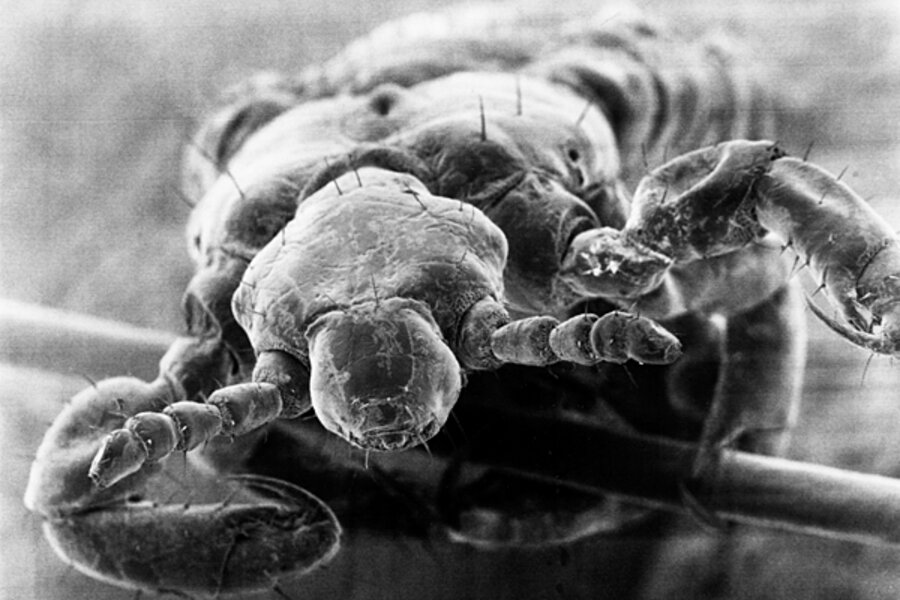New findings suggest that dinosaurs had lice
Loading...
Dinosaurs might have been the first animals tormented by the kinds of lice that now often bedevil children, scientists now suggest.
These new findings also hint that birds and mammals actually began diversifying and spreading across the world before the end of the Age of Dinosaurs that wiped out their competition.
Clever bloodsuckers
Lice are insects that include bloodsucking parasites. These have often developed unique ways of evading a host's defenses. For instance, wing lice have elongated bodies that help them insert themselves between the barbs in a feather and thus evade preening by avian hosts, while gopher lice have grooves in the tops of their heads that clasp onto a single shaft of hair.
The specialization that lice undergo makes it difficult to shift to other hosts, which means they have to evolve closely in step with their hosts. As such, "the record of our past is written in these parasites, and by reconstructing their evolutionary history we can use lice as markers to investigate the evolutionary history of their hosts," said researcher Vincent Smith at the Natural History Museum in London. Indeed, lice have shed light on when humans began wearing clothing and on the ancient history of the Americas.
Smith and his colleagues wanted to use lice to better understand what factors were behind the diversity of today's birds and mammals. One long-standing theory is that the mass extinction event that ended the Age of Dinosaurs about 65 million years ago opened vast new territories and types of habitats for birds and mammals, fostering the earliest stages of their diversification and expansion, a process called radiation.
"Ducks do different things from owls, which do different things from parrots, for example, and it was thought that after the dinosaurs went extinct that's when these birds or mammals diversified into these different niches," said researcher Kevin Johnson, an ornithologist with the State Natural History Survey at the University of Illinois.
But now, based on the evidence from lice, "the radiation of birds and mammals was already under way before the dinosaurs went extinct," Johnson said.
This in turn suggests that birds and mammals were not the first hosts of parasitic lice, but perhaps dinosaurs were.
"Our study shows that they were around at the time of the dinosaurs," Johnson told LiveScience.
Lice family
The scientists built a partial family tree of lice by comparing genes from 69 modern louse lineages. Changes in gene sequence are reliable measures of how related different species in the same group are. Since these changes accumulate over time, they also can be used to create a rough timeline of the evolution of related groups of organisms.
The researchers also used louse, bird and mammal fossils to anchor precise time points in this family tree. The ages of these fossils were determined by the age of the geologic formations in which they were found.
Their analysis "suggests that both bird and mammal lice began to diversify before the mass extinction of dinosaurs," Johnson said. "If the lice were around, we know their hosts were probably around."
"Given how widespread lice are on birds in particular, and also to some extent on mammals, they probably existed on a wide variety of hosts in the past, possibly including dinosaurs," Johnson added.
How dinosaurs got lice
A long-standing question among researchers of parasites was when such lice first evolved, Johnson said.
"In the past, many scientists had speculated regarding the age of lice, some suggesting them to be older than this date and some suggesting them to be younger than 65 million years," Johnson said. "Our study shows that lice first became parasitic about 100 million to 125 million years ago."
"It is also important to note that no modern reptiles or amphibians are parasitized by lice," he added. "Given that the oldest groups of lice are those parasitic on birds and that feathers existed around 100 million to 125 million years ago, it is reasonable to speculate that they only became parasites after the origin of feathers or fur."
That has intriguing implications for how birds got lice in the first place. "Recent findings have revealed that a number of dinosaurs might have been sported feathers, "so maybe birds just inherited their lice from dinosaurs," he said.
These new findings support recent genetic work suggesting that major groups of birds and mammals were around before dinosaurs died out.
"It may be that some of the key innovations of birds and mammals, such as flight, heavy parental investment in raising young, and being able to maintain a constant body temperature in cold conditions, allowed them to out-compete dinosaurs in some habitats," Johnson said.
The scientists detailed their findings online tomorrow (April 6) in the journal Biology Letters.





